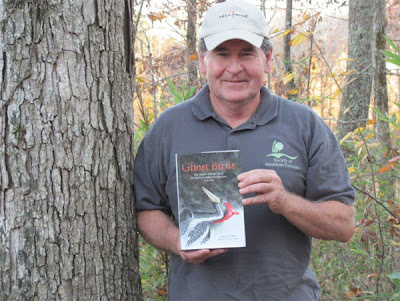
BLOGGERS: PLEASE PASS THIS POST ALONG TO OTHERS.
Well, for starters, the beautiful powder-gray sandhill crane is dead!
And somehow, a dead sandhill is much less precious than a live one, because its life is what we celebrate. In many parts of the world cranes are revered as "Birds from Heaven." Killing one is a dishonor, a harbinger of ill fortune. Peter Matthiessen writes, "Outside the Hall of Supreme Harmony, two noble bronze cranes awaited me on the high terrace; the most famous crane statues in the world, they originally stood guard on either side of the emperor's throne in the imperial palace as symbols of long life and good fortune, and like most creatures depicted in Chinese art, they are beautiful."
North America has two species of cranes: the large white five-foot-tall whooping crane and the smaller, four-foot-tall, sandhill. I've written about sandhill cranes before. Historically, there once was a large population that migrated from breeding grounds in the north (primarily Wisconsin) to wintering grounds (wetlands and marshes) in the south. During the spring and fall they passed through Tennessee. But that population was overhunted. By the 1930s, only 25 breeding pairs were recorded in Wisconsin. Seeing one pass through the Volunteer State was a rare occurrence.
Through "compassionate" conservation efforts—saying "no, no" to hunters and creating wildlife refuges—the eastern migratory flock has slowly rebounded. But it's taken 70 years: one man's lifetime.
Hurray for our side! We can do the right thing! Right a wrong! Save the day!
East Tennessee got into the act in the late 1980s by planting up to 750-acres of corn annually at Hiwassee Wildlife Refuge in Meigs County. The sandhills stopped and liked the buffet to such an extent that thousands of them decided to spend the winter. That's good old Tennessee hospitality, never let a stranger pass without offering him a meal. Our man-made bounty was so plentiful, the cranes had no need to fly farther south. Over the years the sandhill numbers grew. Life was good. It was such a wondrous sight that watching them became an attractant to birdwatchers, curiosity-seekers and passing tourists. A sandhill crane festival was created, and the event became a high point of every cold, dreary February. (Birding festivals across the country draw thousands of visitors. Thousands.) I attended the sandhill festival at Hiwassee many times and enjoyed every one.
But wait. The growing sandhill crane population has been deemed a problem. The festival terminated. And the Tennessee Wildlife Resources Agency (TWRA)—the governing body for all wildlife in our state—is being pressured to open a hunting season on the cranes.
Say what?
We plant corn. We thrill at the sight of thousands of cranes eating that corn, we turn it into a tourist attraction and now we want to hide in the tall grass and shoot them. (The cranes, not the tourists.)
If sandhill crane hunting in Tennessee does not make sense to you, write a letter to voice your opposition. I MEAN it! Do not put this off, or the photo at the top of this page will become a reality.
Here are the addresses:
Michael Chase, TWRC Chairperson/PO Box 50370/Knoxville, TN 37950 email: mike.chase@tn.gov
James Fyke, Commissioner, TDEC/21st Floor, L&C Tower/401 Church St./Nashville, TN 37243
Dr. Jeff McMillan/1705 Edgemont Ave./Bristol, TN 37620 email: jeff.mcmillin@tn.gov
Mr. Terry Oliver, Commissioner, TN Dept. of Agriculture/Ellington Agricultural Center/PO Box 40627/Nashville, TN 37204
Eric Wright/1587 Highway 91/Elizabethton, TN 37643 email: eric.wright@mapeswire.com
Annual Florida Birding Festivals:
1. Everglades Birdfest: Everglades National Park: January
2. Big “O” Birding Festival: Glades and Hendry Counties: January, three day event
3. Southwest Florida Birding Festival: Rookery Bay, Naples: January
4. Space Coast Birding & Wildlife Festival: Titusville: January, five day event
5. Burrowing Owl Festival: Cape Coral: February
6. Orlando Wetlands Park Festival: Christmas, FL: February
7. Suwannee River Valley Birding Festival: White Springs: March
8. Pelican Island Wildlife Festival: Sebastian, FL: March
9. Goby Fest: St. Sebastian River Preserve State Park, Fellsmere: April
10. Wakulla Wildlife Festival: Wakulla Springs: April
11. Welcome Back Songbirds Festival: Titusville: April
12. Welcome Back Songbirds Festival: Brooksville: April
13. Pinewoods Bird Festival: Pebble Hill Plantation: April
14. Florida’s First Coast Birding and Nature Festival: St. Augustine: April
15. Nature Coast Birding and Wildlife Experience: Cedar Key: September
16. Florida Keys Birding & Wildlife Festival: Marathon, FL: September
17. “Ding” Darling Days: Sanibel Island: October
18. Florida Panhandle Birding and Wildflower Festival: Port St. Joe: October
•
























































































